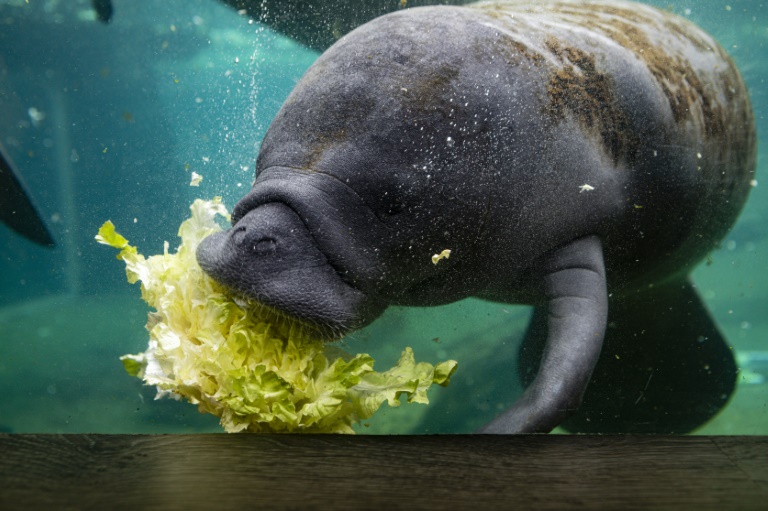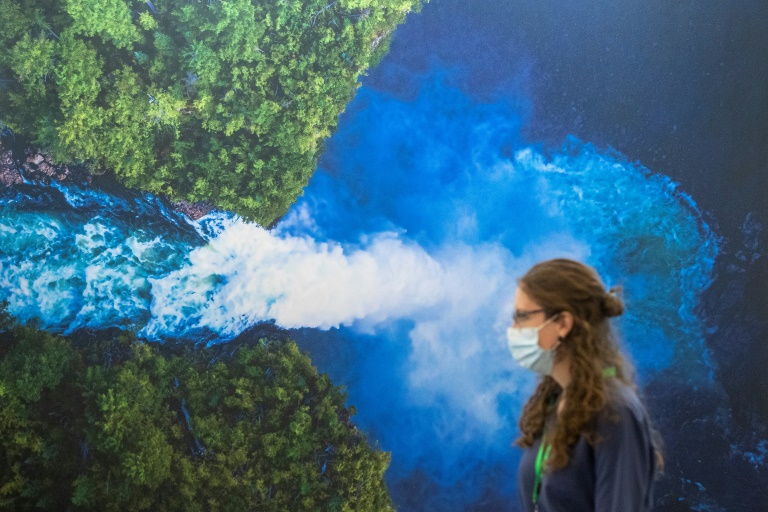Florida’s manatees — which are increasingly facing starvation, largely as a result of pollution — are going to be fed directly by wildlife officials, in what they called an “unprecedented” step to prevent further die-off.
The pilot program will start with Indian River Lagoon, on the Sunshine State’s east coast southeast of Orlando, federal and state authorities announced Wednesday.
Many manatees migrate to this area in winter, to bask in the warm water discharged by a nearby power plant and to graze on seagrass.
But over the last decade, heavy runoff from nearby farms and urban areas has caused algae blooms to explode, which increasingly threaten the sea mammals’ main food source.
The algae blocks out sunlight, which seagrass needs to grow, while also releasing poisonous toxins.
At least 1,017 manatees have died so far in 2021, with the most deadly winter months still to come.
“This unprecedented event is worth unprecedented actions,” announced Thomas Eason, the deputy director of Florida’s Fish and Wildlife Conservation Commission.
Under the new program, only a small number of individuals will be authorized to feed the manatees in the Indian River Lagoon, and only if necessary, Eason explained, reiterating that the general public should not do so.
In captivity, manatees are fed a diet of salad, cabbage and other vegetables.
Also known as sea cows, manatees are large animals of about 10 feet (three meters) in length and weighing between 800 and 1,200 pounds (360-540 kilos).
They can eat up to 10 percent of their weight every day, so any decrease in seagrass growth can have dire consequences.
Save the Manatee, a local non-governmental organization, praised the new program, with executive director Patrick Rose calling it a “significant move to help prevent another severe loss of manatees due to starvation.”










